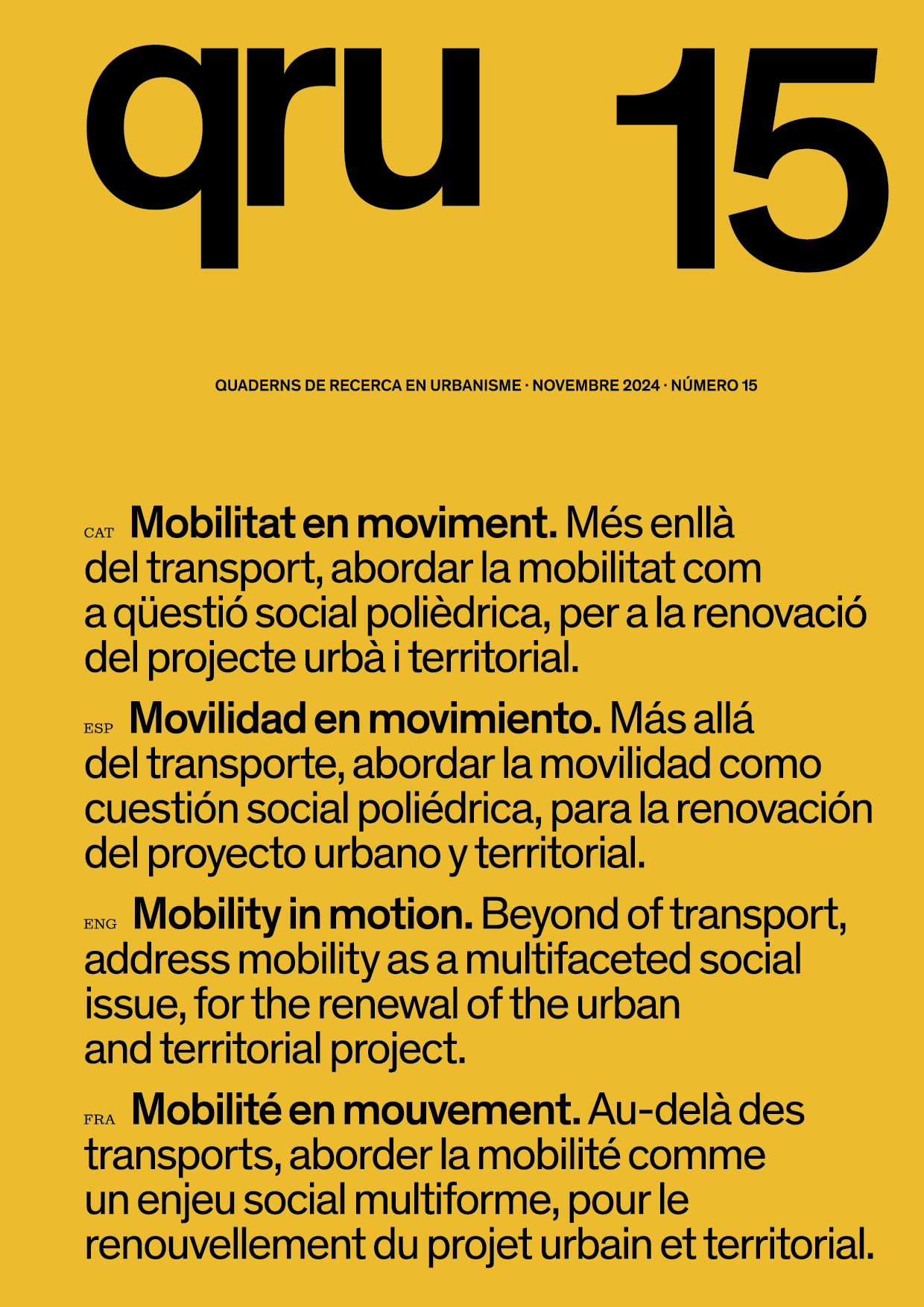Accessibility assessment of three housing states in barcelona’s metropolitan area. Tackling the 15-minute city concept and the Diputació de Barcelona requirements
Tackling the 15-minute city concept and the Diputació de Barcelona requirements
DOI:
https://doi.org/10.5821/qru.11956Resumen
Almost half of Barcelona’s Metropolitan Area residents have difficulties accessing services and facilities daily. Taking this into account and adding the fact that a huge percentage of these people are forced to use motorized vehicles as their transportation, the concept of the 15-minute city remains cut off from reality.
In this context, one of the most common built urban morphologies is housing states, designed with the only function to dwell and leaving behind all the other daily basic needs.
From this framework, this project seeks to measure the level of accessibility in three housing states in Barcelona's Metropolitan Area (Can Ros, Sud-Oest del Besòs and Canaletes) to evaluate the lack of reachability to basic equipments and services. Also, it is intended to analyze the relationship with the level of accessibility to public transport. All the research has been performed following the 15-minute city concept and the standards proposed by the Diputació de Barcelona.
The obtained results after applying this many-sided methodology show that none of the studied areas reaches the required amount of accessibility to fundamental amenities. Nevertheless, some differences are evidenced between the sites revealing a correlation with their locations. Moreover, the relation between the accessibility to services with public transport is not determined by the given factors, letting a path for future research.

Publicado
Número
Sección
Licencia
Aquellos autores/as que tengan publicaciones con esta revista, aceptan los términos siguientes:
Los autores/as conservarán sus derechos de autor y garantizarán a la revista el derecho de primera publicación de su obra, el cuál estará simultáneamente sujeto a la Licencia de reconocimiento de Creative Commons CC BY-NC-ND- 4.0 que permite a terceros compartir la obra siempre que se indique su autor y su primera publicación esta revista, pero no se pueden cambiar ni se pueden utilizar comercialmente.
Los autores/as podrán adoptar otros acuerdos de licencia no exclusiva de distribución de la versión de la obra publicada (p. ej.: depositarla en un archivo telemático institucional o publicarla en un volumen monográfico) siempre que se indique la publicación inicial en esta revista.
Se permite y recomienda a los autores/as difundir su obra a través de Internet (p. ej.: en archivos telemáticos institucionales o en su página web) antes y durante el proceso de envío, lo cual puede producir intercambios interesantes y aumentar las citas de la obra publicada. (Véase El efecto del acceso abierto).












